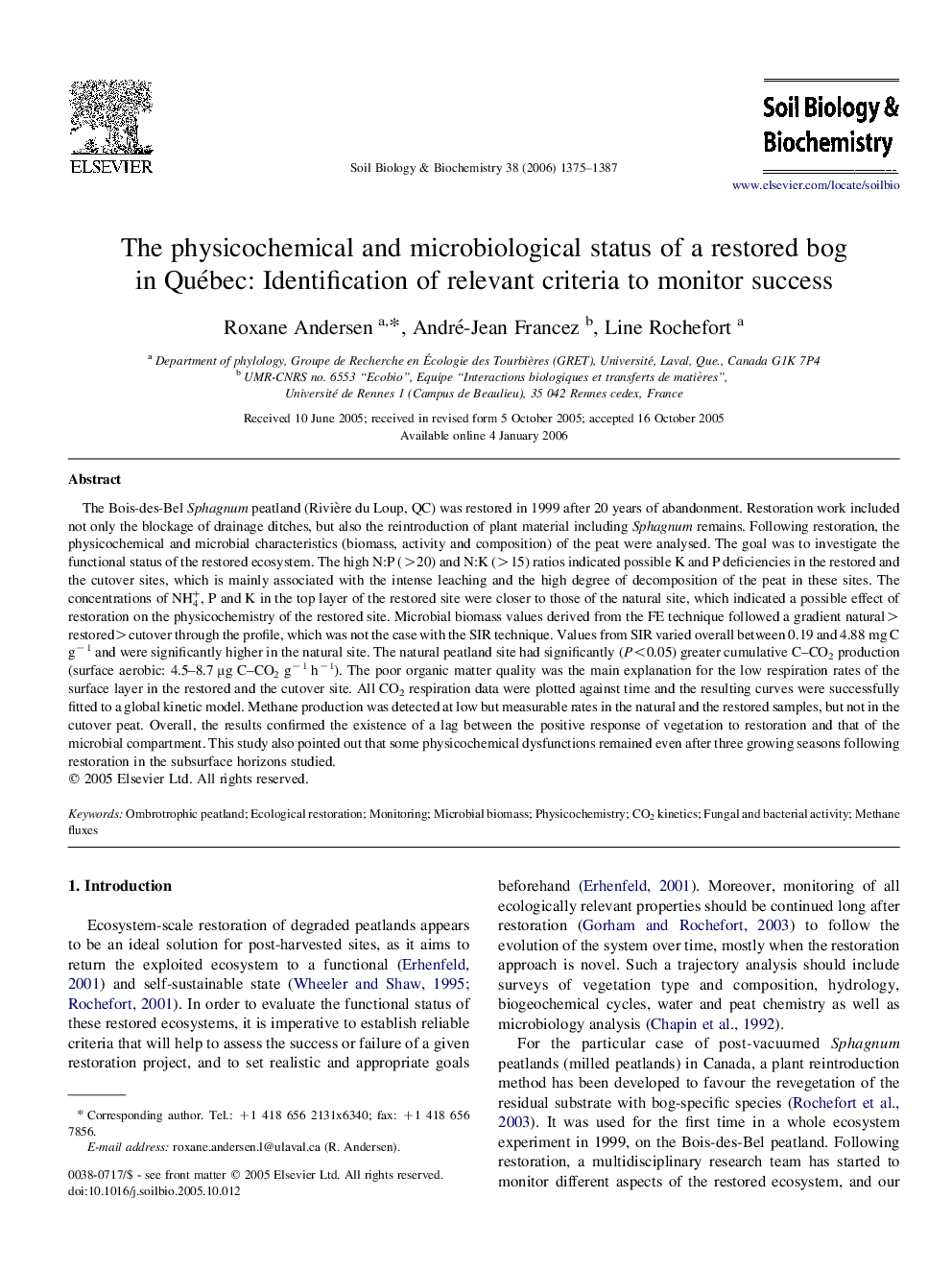| Article ID | Journal | Published Year | Pages | File Type |
|---|---|---|---|---|
| 2026661 | Soil Biology and Biochemistry | 2006 | 13 Pages |
The Bois-des-Bel Sphagnum peatland (Rivière du Loup, QC) was restored in 1999 after 20 years of abandonment. Restoration work included not only the blockage of drainage ditches, but also the reintroduction of plant material including Sphagnum remains. Following restoration, the physicochemical and microbial characteristics (biomass, activity and composition) of the peat were analysed. The goal was to investigate the functional status of the restored ecosystem. The high N:P (>20) and N:K (>15) ratios indicated possible K and P deficiencies in the restored and the cutover sites, which is mainly associated with the intense leaching and the high degree of decomposition of the peat in these sites. The concentrations of NH4+, P and K in the top layer of the restored site were closer to those of the natural site, which indicated a possible effect of restoration on the physicochemistry of the restored site. Microbial biomass values derived from the FE technique followed a gradient natural>restored>cutover through the profile, which was not the case with the SIR technique. Values from SIR varied overall between 0.19 and 4.88 mg C g−1 and were significantly higher in the natural site. The natural peatland site had significantly (P<0.05) greater cumulative C–CO2 production (surface aerobic: 4.5–8.7 μg C–CO2 g−1 h−1). The poor organic matter quality was the main explanation for the low respiration rates of the surface layer in the restored and the cutover site. All CO2 respiration data were plotted against time and the resulting curves were successfully fitted to a global kinetic model. Methane production was detected at low but measurable rates in the natural and the restored samples, but not in the cutover peat. Overall, the results confirmed the existence of a lag between the positive response of vegetation to restoration and that of the microbial compartment. This study also pointed out that some physicochemical dysfunctions remained even after three growing seasons following restoration in the subsurface horizons studied.
